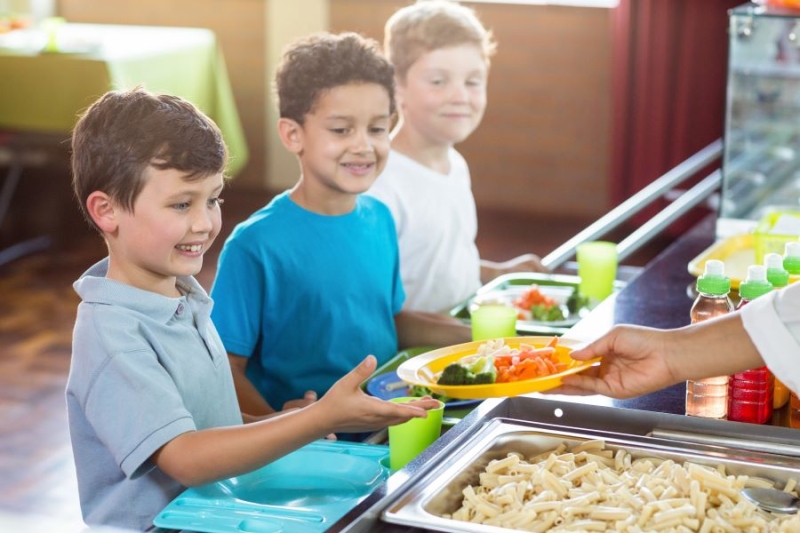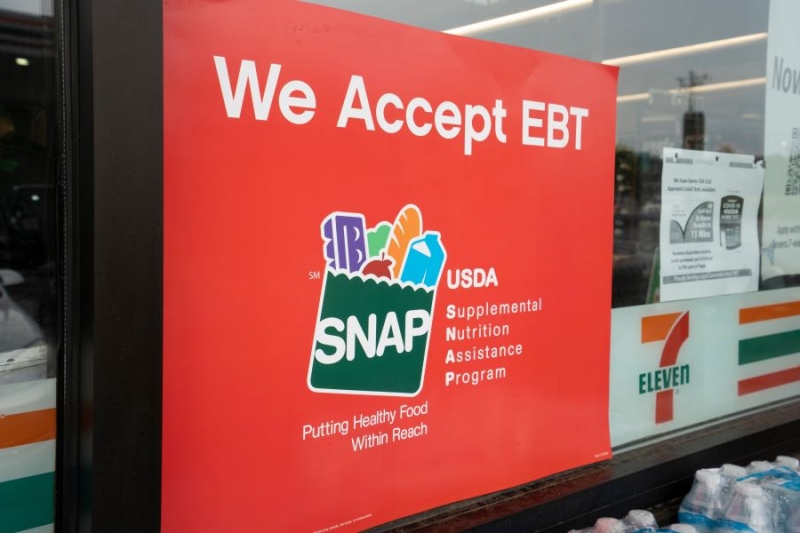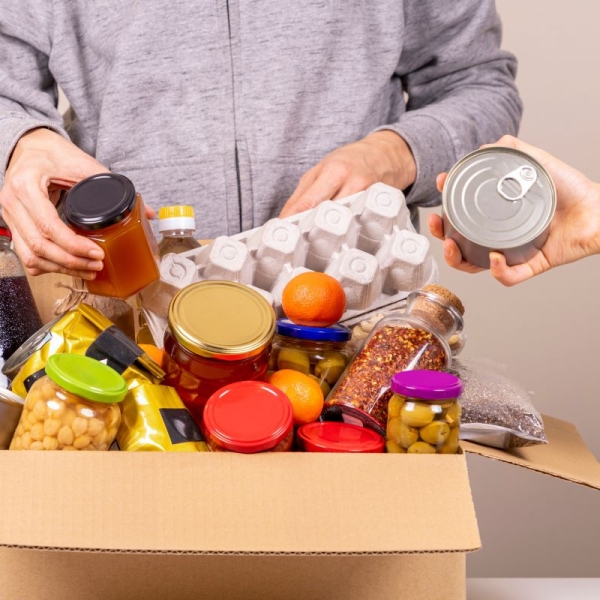Contents
09 Sep 2024 — As food insecurity among US households grows, organizations and anti-hunger activists urge to strengthen nutrition programs and expand access to all families in need. At the time of a food security survey, almost 42% of all US households experiencing food insecurity in 2023 did not participate in any of the country’s three main nutrition programs — the Supplemental Nutrition Assistance Program (SNAP), the National School Lunch Program (NSLP) and the Special Supplemental Nutrition Program for Women, Infants and Children (WIC).
Last week, the US Department of Agriculture (USDA) reported a growth in US food insecurity in its 2023 Household Food Security in the US report. From 12.8% of households experiencing food insecurity “at least sometime during the year” in 2022, a year later, 13.5% of US households did not have access to enough food over the year for an active, healthy life for all members.
Nutrition Insight takes a deep dive into US nutrition programs with representatives from the Center for Science in the Public Interest (CSPI), the Food Research and Action Center (FRAC) and Vitamin Angels.
These organizations underscore the need to address the root causes of food insecurity, such as poverty, inadequate wages, lack of affordable housing, unaffordable healthcare and systemic racism.
In addition, Joelle Johnson, CSPI deputy director, highlights the “myriad ways” the US food safety net can mitigate the effects of poverty by improving SNAP eligibility, accessibility and benefit levels.
“Other opportunities include investing in universal school meals, increasing donations and distributions of nutritious items in the charitable food sector, expanding fruit and vegetable incentives, improving stocking standards in retail environments to align with the latest Dietary Guidelines for Americans, and investing in research to strengthen food and nutrition security in SNAP.”
Participation in nutrition programs
USDA’s food security report examines the shares of households that participated in the three most prominent food and nutrition assistance programs in the US: SNAP, NLSP and WIC. The report’s authors note that data indicates that “SNAP improves food security,” but they also caution that food insecurity was measured over the whole of 2023, while participation in nutrition programs was measured over 30 days.

Children of low-income families receive a free lunch or one at a reduced price at schools participating in the NSLP program.The authors point out that 41.9% of all food-insecure households and 44.3% of households with very low food security did not participate in any of these programs during the 30 days before the survey. The most extensive participation in that month was for SNAP (42.3% of food-insecure households), followed by NSLP (28.9%) and WIC (7%).
In 2023, just over half of US households with incomes under 130% of the poverty line and experiencing food insecurity received SNAP benefits.
The USDA report highlights: “Some food-insecure households may not be eligible for these programs, may choose not to participate, or may underreport utilization of these programs.”
Johnsen adds that the low participation in SNAP points to barriers to accessing the program, including “punitive rules around who is eligible to receive benefits from the program. Some examples include stringent work requirements and a lifetime ban for previously incarcerated individuals.”
“Furthermore, it is important to keep in mind that specific populations that lack support, such as college students, older adults and immigrants, are more at risk and experience food insecurity at much higher rates than the national average.”
Combining approaches
Colleen Delaney, Ph.D., RDN, technical director for US programs at NGO Vitamin Angels, details that food insecurity is a complex problem, and multiple approaches are needed to address critical barriers to accessing adequate and healthy food.
“One short-term solution to reduce food insecurity is the provision of benefits through nutrition assistance programs like Medicaid through section 1115 waivers, and supplementary food programs such as WIC, which provides healthy foods to women and children at high risk for food insecurity.”
She also highlights the need for programs such as WIC to receive continued funding, and ensuring Americans have adequate food access remains a priority for all.

Multiple approaches are needed to address critical barriers to accessing adequate and healthy food.Moreover, Delaney points to the support of non-profit organizations and safety net programs. “These programs provide effective solutions to increase access to nutritious foods and nutrients through knowledgeable local partners that support their community.”
“For example, Vitamin Angels delivers free prenatal vitamins and minerals to pregnant women who may lack access to health services and have an increased need for key nutrients to support a healthy pregnancy.”
Strengthening programs
FRAC underscores that solutions to hunger exist but “require political will,” such as protecting and strengthening SNAP.
This year, FRAC submitted a letter to the US Congress urging the protection and strengthening of the program in the upcoming Farm Bill and other legislation. Over 1,400 national, state and local organizations signed and supported the letter.
“SNAP is our nation’s first line of defense against hunger, helping more than 40 million people put food on the table. Despite its many strengths in reducing hunger and improving health outcomes, the average SNAP benefit is only US$6.20 daily. Congress needs to do more to increase SNAP benefits so participants can get the nutrition they need to thrive,” a FRAC spokesperson tells us.
“We also need to make Healthy School Meals for All available to all students. Offering school breakfast and lunch to all students at no charge to families helps ensure that all children have the nutrition they need to grow and thrive.”

The organizations highlight the need to strengthen and protect SNAP as a powerful anti-hunger tool.“We also urge more states to renew their commitment to Summer Nutrition Programs and, for those that haven’t yet, to opt into Summer EBT for 2025. Summer EBT offers an exciting opportunity to enhance food security for children during the summer months.”
Johnson also recognizes that the 2024 Farm Bill is a significant opportunity to address food and nutrition insecurity for the most vulnerable populations in the US.
“For example, the Gus Schumacher Nutrition Incentive Program provides financial incentives to lower the cost of fruits and vegetables. This program ought to be fully funded so that all people who participate in SNAP can utilize it.”
Congressional action
In a statement, US agriculture secretary Tom Vilsack illustrates that the findings of the USDA report are “a direct outcome of Congressional actions” that erode a safety net for food insecure households, for example blocking expansion of the Child Tax Credit or restricting access to SNAP.
“Policies like the expanded Child Tax Credit and Earned Income Tax Credit and enhanced SNAP benefits helped drive the poverty rate down to a record low of 8% percent in 2021. This is progress we should be working together to build on, not strip away.”
He also highlights that stable food insecurity among households with children indicates that “programs to help feed kids work” and that these programs must be continued and strengthened. He refers to the NSLP, which provides school lunches at a discount or for free; WIC, which serves over 6 million mothers, children and infants; and SNAP, “our nation’s most powerful anti-hunger tool.”
“USDA will continue to encourage states to adopt the evidence-based SUN Bucks program, launched in 2024 and helps feed kids in summer months when school is out and hunger rises. Bolstering participation in SNAP and fully funding WIC are also critical. The costs of not doing so are clear — we owe it to the next generation to give them the best possible start in life,” Vilsack concludes.
By Jolanda van Hal

